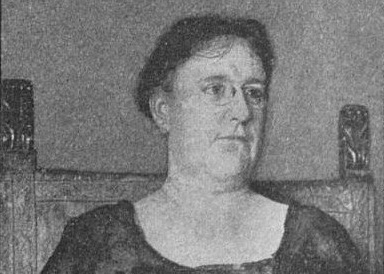The only daughter in a family of four children, Josephine Wright Chapman (1867-1943) was born to affluent and civic-minded parents. Her father, James Levi Chapman, was president of the Fitchburg Machine Works and her mother, Mary E. Wright, was actively involved in the Fitchburg Woman’s Club. When she chose to become an architect, her parents were unsupportive, marking the beginning of many challenges she would encounter in her pursuit of a career perceived as “masculine” employment.
Undeterred, Chapman left home for Boston at age 24 to pursue architecture, choosing the oldest and least costly route to learn—an apprenticeship. She pawned jewelry and clothing to support herself and her office, disclosing that, “though her people were well-to-do, she began her professional career without a cent.”
Chapman undertook her apprenticeship at a time when architects were struggling to differentiate themselves from builders. Programs in architectural training excluded women outright or had policies in place that discouraged their admittance. Not until 1910 at Cornell University would an American woman receive a degree in architecture.
In light of this, securing an apprentice- ship with the prestigious Boston firm of Blackall, Clapp and Whittemore was an impressive accomplishment for Chapman. A draftsman from 1892 to 1896, she took full advantage of the opportunities available to her, working tirelessly to develop skills and gain exposure and confidence in public buildings and cutting-edge technologies, including steel-frame construction.
Moving to Grundmann Studios, a women’s artist collective in Boston, Chapman received her first commission, to design Craigie Arms, a private dormitory for students at Harvard University. A prestigious commission for a woman just starting out, the Georgian Revival style building is listed on the National Register of Historic Places and has recently been renamed Chapman Arms in her honor.
Chapman opened an office on Park Street in Boston. Her projects included St. Mark’s Episcopal Church, financed by her first female patron, Minerva C. Crocker, a wealthy, distinguished woman from her hometown of Fitchburg. In 1901, she won a competition for the New England Building at the Pan-American Exposition in Buffalo, New York. Her structure was the only entry created by a woman.
Despite her success, Chapman’s application for membership to the American Institute of Architects was denied and she was also refused membership by the Boston Architectural Club. Nonetheless, this was a groundbreaking period in her career. She eventually moved to New York and was accepted into the New York Society of Architects.
A true pioneer in designing public buildings, the National Register nomination form for Harvard’s Craigie Arms dormitory describes her, “as one of the earliest successful woman architects in New England.”
Three of Chapman’s buildings are on the National Register of Historic Places and her work was featured in popular periodicals of the day. Her tireless persistence in the field of architecture contributed to the advancement of women in her field.

